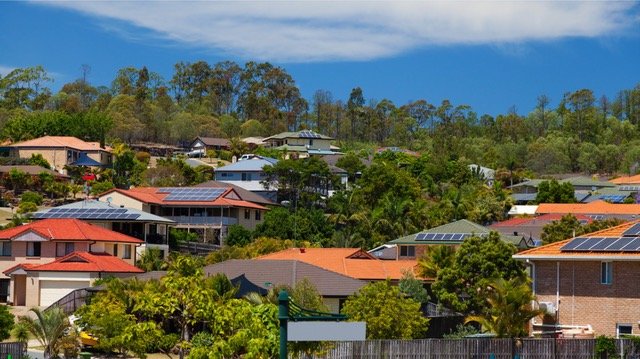Rooftop solar is the missing piece in Auckland’s energy mix – and Entrust can help!
Many Aucklanders would be unaware that their electricity lines company Vector actually has a rooftop solar programme, of a sort. Back in 2013, the company launched a partnership with Californian company SunVerge, and since then at least 243 households have taken installation of a “SunGenie” system. That’s around 20 households opting in each year. Not exactly rapid progress towards our city’s energy future!
Through 11 years, this scheme has enticed fewer than one in every 2000 households in Auckland to take up rooftop solar, during which the costs of solar panels have plummeted. Unfortunately, SunVerge is now in liquidation and the Vector scheme is in for major changes (3). As part of this, each participating household is being asked to fund a new inverter and/ or control system at a cost of up to $4,000 – a financial penalty on the households which stepped up to trial this service.
We don’t fully know the reasons Vector’s rooftop solar programme has been so anaemic. We do know that both rooftop solar and home batteries become more economic every day. Household deployment of solar is no longer new or remarkable – except, it seems, in Auckland.
What would it take for Vector and Entrust to support a rooftop solar programme with much greater scale and impact than the failed SunGenie project?
The Entrust funding which currently goes towards undergrounding of power lines is also tagged for “innovation projects”. A similar sized budget could provide a ready means for Entrust to provide seed funding for a new rooftop solar scheme. This could be operated by Vector but with the support of private installers who are growing in number.
Independent thinktank Rewiring Aotearoa has been crunching the numbers. They calculate that, on average, a New Zealand home which is currently using gas appliances and a petrol vehicle could save about $1,500 per year, assuming they pay interest at standard market rates, or about $4,500 per year if they can get a low interest loan. This assumes they move to rooftop solar, a home battery and an electric vehicle. Every home is different, of course, but these are substantial savings on average – and will be even larger for some homes.
For its part, Vector has secured some handsome sums in recent years from the partial sale of its metering business and (subject to regulatory approval) the proposed selldown of its gas assets. The business is stronger financially than a few years ago, and can comfortably afford to increase its role in rooftop solar.
In conjunction with the 1% green finance offers which are available from some major banks, we think Entrust and Vector can work together to get more people onto rooftop solar, faster. This will also take advantage of potential changes to regulatory settings which the Electricity Authority is considering to encourage uptake of rooftop solar and batteries.
A new rooftop solar scheme for Auckland would offer Aucklanders lower running costs for their households and their (electric) cars, and improved resilience of power supply. And of course, this all helps reduce greenhouse gas emissions so eases the burden on the planet.
Across Auckland this could save the city hundreds of millions of dollars. These are really savings for citizens like you and me in the form of lower monthly power bills, and potentially lower running costs for motor vehicles.
I am supporting More for You, Better for Auckland because if elected, they will direct Entrust to work with Vector on a new, more ambitious rooftop solar programme. It will save people money and reduce dependence on fossil fuels. Let’s make it happen!
By guest contributor: Rohan McMahon
Australians and New Zealanders have a few big differences. One, for example, has a much better rugby team… Another obvious difference which is apparent to Kiwis visiting major Australian cities is rooftop solar energy.
Image: Australian suburb, with solar panels visible on many rooftops.
It turns out New Zealand has about two-thirds as much “solar insolation” (theoretical solar capacity, measured throughout the year) as Australia. Yet it has less than one-tenth the uptake of solar.* Look across a suburban vista in Brisbane or Melbourne and you will see way more solar panels than Auckland. We are way off the pace.
Rooftop solar is the fourth largest source of electricity generation in Australia, providing over 11 per cent of the power supply (1). There are over 3.7 million rooftop solar installs registered across Australia. (2)
Rohan McMahon is a venture capitalist. Rohan stood for Entrust with More for You, Better for Climate in 2021.
References
(2) Source: https://www.energycouncil.com.au/media/fydjqofh/australian-energy-council-solar-report-q12024.pdf
(3) See https://www.vector.co.nz/special-pages/sungenie-system-faqs



